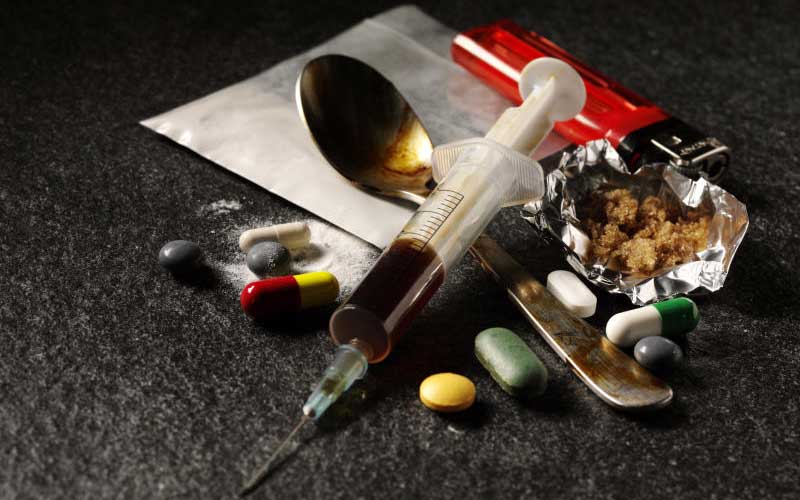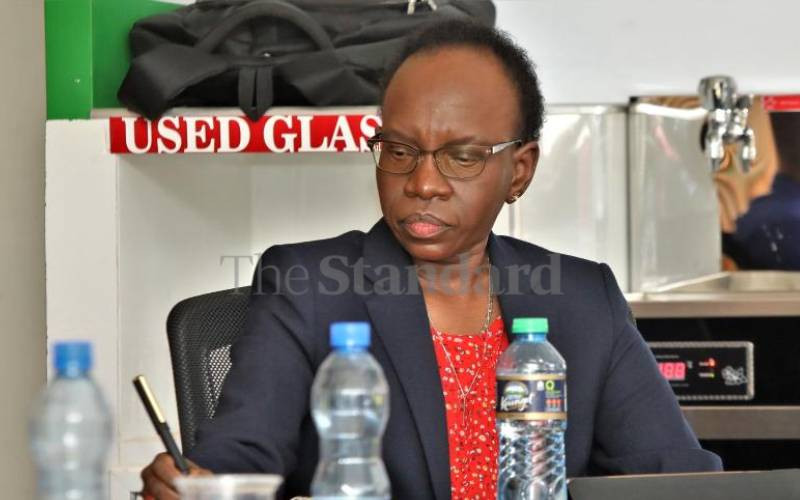
Picture a four-old baby puffing a cigarette, chewing miraa or snorting cocaine. That is the image a new survey has painted.
The National Authority for the Campaign Against Alcohol and Drug Abuse (Nacada), in a report released today, has revealed school-going children are abusing drugs.
Here of some of the worrying figures from the report dubbed Status of Drugs and Substance Abuse among Primary School Pupils in Kenya, 2019.
The survey involved 3,307 pupils from 177 primary schools spread across 25 countries.
Drug availability
Tobacco (41.9 per cent), Prescription drugs (27.8 per cent), Alcohol (25.9 per cent) and Miraa (23.1 per cent) were mentioned as the most available abused drugs and substances.
This is as 16.9 per cent of primary school pupils are using at least one drug or substance of abuse.
The portion of the pupils on prescription drugs stands at 7.2 per cent. Of those, 3.2 per cent are smoking tobacco, 2.6 per cent drinking alcohol and another 2.3 per cent chewing miraa.
The report notes that use of bhang, inhalants, heroin and cocaine are at below 1 per cent.
Who has tried a drug?
Data from the survey shows 20.2 per cent of primary school pupils have used at least one drug or substance of abuse in their lifetime.
At least 10.4 per cent of the pupils have ever used prescription drugs in their lifetime and 7.2 per cent have tried alcohol.
Where do they buy them?
The students mainly get the drugs and substances kiosks or shops near school (28.6 per cent), bars around their schools (25.7 per cent), from their friends (19.3 per cent), or buy from other students (13.7 per cent); and school workers (13.6 per cent).
Stay informed. Subscribe to our newsletter
School holidays top the list of the periods they abuse the drugs with inter-school competitions and weekends getting a mention too.
How does it affect them?
The report associates drugs or substance abuse with class repetition and decline in academic performance.
It says pupils who use at least one drug or substance of abuse are 18 per cent more likely to repeat a class while the vice was associated with a 6.4 per cent decline in academic performance.
What are the risk factors associated with drug abuse?
Pupils from families where parent(s) or guardian(s) were using drugs or substances of abuse said to be more likely to use the substances.
Those with knowledge of a friend or schoolmate who was abusing drugs also likely to follow suit.
Weak parental guidance and enforcement of laws also mentioned. Other risk factors include family conflicts, exposure to advertisements of drugs e.g. alcohol through mass media; negative role modelling by teachers; and existences of bars, shops or kiosks near schools.
 The Standard Group Plc is a
multi-media organization with investments in media platforms spanning newspaper
print operations, television, radio broadcasting, digital and online services. The
Standard Group is recognized as a leading multi-media house in Kenya with a key
influence in matters of national and international interest.
The Standard Group Plc is a
multi-media organization with investments in media platforms spanning newspaper
print operations, television, radio broadcasting, digital and online services. The
Standard Group is recognized as a leading multi-media house in Kenya with a key
influence in matters of national and international interest.
 The Standard Group Plc is a
multi-media organization with investments in media platforms spanning newspaper
print operations, television, radio broadcasting, digital and online services. The
Standard Group is recognized as a leading multi-media house in Kenya with a key
influence in matters of national and international interest.
The Standard Group Plc is a
multi-media organization with investments in media platforms spanning newspaper
print operations, television, radio broadcasting, digital and online services. The
Standard Group is recognized as a leading multi-media house in Kenya with a key
influence in matters of national and international interest.









